Zoar Village


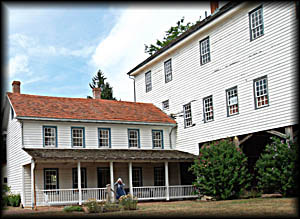
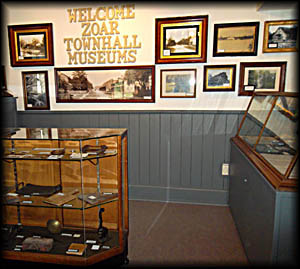
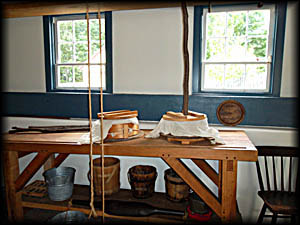
Some of Zoar
Village's Buildings
Village's Buildings

General Store
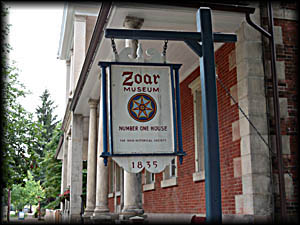
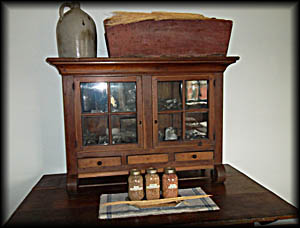

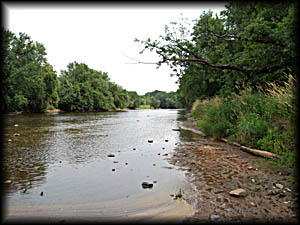
The Ohio and Erie Canal (left) ran alongside the Little Miami River (right).
The original settlers of Zoar Village started a successful communist community in 1819, twenty-nine years before Marx published The Communist Manifesto and ninety-eight years before V.I. Lenin took a train into Russia to found the Soviet Union. German Separatists—men and women who had broken from the Lutheran church—founded Zoar Village in 1817, and created a commune two years because difficult times made it hard for any one family to survive on its own. The commune succeeded beyond anyone’s hopes, lasting until 1898.
I’ve visited Zoar twice over the years, the first time while in college in the early 90s, and again last year. It is of this latter visit I will write of here. Getting there and back, it turned out, proved something of an adventure. Being summer and therefore construction season, my traveling companions and I soon encountered a major detour. Being the driver, I made the decision to circumvent it, figuring I could dart around using some back roads. Well, that didn’t work out so well. I wound up traveling down dirt roads used mainly by the Amish. About half way down an arrow-straight stretch that cut through two fallow fields without a single structure along either side, we came upon an “End Detour” sign! I can only guess someone put it there as a joke.
Not long after returning to the main route, another detour appeared. This time I stuck to it, not wanting to wander into the boondocks again. It took us into a small city—Wooster, I think—and there I saw a restaurant advertising itself as having barbeque. Well, that sounded good, so we stopped there for lunch. Turns out it sold Texas-Mexican fair, something I’ve no love for. After an unsatisfying dinner, we continued on our way. About a quarter of a mile down the road we saw, to my annoyance, a Longhorn—one of my favorite restaurants.
I’ve visited Zoar twice over the years, the first time while in college in the early 90s, and again last year. It is of this latter visit I will write of here. Getting there and back, it turned out, proved something of an adventure. Being summer and therefore construction season, my traveling companions and I soon encountered a major detour. Being the driver, I made the decision to circumvent it, figuring I could dart around using some back roads. Well, that didn’t work out so well. I wound up traveling down dirt roads used mainly by the Amish. About half way down an arrow-straight stretch that cut through two fallow fields without a single structure along either side, we came upon an “End Detour” sign! I can only guess someone put it there as a joke.
Not long after returning to the main route, another detour appeared. This time I stuck to it, not wanting to wander into the boondocks again. It took us into a small city—Wooster, I think—and there I saw a restaurant advertising itself as having barbeque. Well, that sounded good, so we stopped there for lunch. Turns out it sold Texas-Mexican fair, something I’ve no love for. After an unsatisfying dinner, we continued on our way. About a quarter of a mile down the road we saw, to my annoyance, a Longhorn—one of my favorite restaurants.
The trip home also proved memorable. Not wanting to deal with the detours I’d encountered on the way to the village, I decided to take I-77 north to US-250. Alas, latter’s exit was closed, so I kept going north, figuring I’d head to and take the Ohio Turnpike instead. After driving through heavy traffic for quite some time, I began to wonder if I had perhaps underestimated the distance to my new destination. I had a map in the back of my car but couldn’t reach it without stopping. Deciding to consult it, I picked an exit at random, getting off onto a congested street that offered few opportunities to park. I stopped at a Starbucks and there consulted my map only to discover we had about two or three miles to go before reaching the Turnpike!
Getting on proved easy enough, getting off not so much. A series of construction barrels confused and caused me to miss my exit. Fortunately I only had to go another 7.5 miles to get to the next one. Needless to say, I got home far later than I’d ever planned. But then again, as the Car Talk guys used to say, it’s the trips that didn’t go right you remember the best.🕜
Getting on proved easy enough, getting off not so much. A series of construction barrels confused and caused me to miss my exit. Fortunately I only had to go another 7.5 miles to get to the next one. Needless to say, I got home far later than I’d ever planned. But then again, as the Car Talk guys used to say, it’s the trips that didn’t go right you remember the best.🕜

All these alternative routes caused us to arrive in Zoar at about 1:30 in the afternoon, this during a particularly nasty heat wave. Undaunted, we paid for tickets that gave us access to all the historical buildings. Touring ensued.
Zoar Village offers ten restored or reconstructed buildings: a bakery, a blacksmith’s shop, a dairy, a garden and greenhouse, a former private residence known as the “Number One House,” a tin shop, a wagon shop, Zoar Store, and a multipurpose building that had once served as the kitchen, laundry, and magazine. On the day we visited, each of these buildings contained at least one guide dressed in the period dress to tell us about the building’s historical uses as well as anecdotes about its former inhabitants. They did a wonderful job answering my many questions. I arrived knowing nothing about Zoar’s history and left fully acquainted with its full history thanks to them. I now knew, as an example, that the commune ended when the village’s people voted to privatize everything. Why? The village’s younger generations had had so much contact with the outside world they wanted to live like other Americans—no more sharing with others for them.
I consider Williamsburg, Virginia, the gold standard of reconstructed communities dedicated to a specific time period. While Zoar Village lacks Williamsburg’s resources, staff, and physical size, it nonetheless stands as a real gem for lovers of history and gave me as much satisfaction as Williamsburg ever has. I don’t plan to do a rating system for this travel log, but if I did, Zoar would reach the top of the scale.
Before heading home, we decided to take a look at the remnants of the Ohio and Erie Canal not very far away. On one side of the gravel path stood the remnants of the canal, and on the other flowed the Little Miami River. Because of the heat and our tiredness, we didn’t go very far, but I’d love to come back one day to explore more.
Zoar Village offers ten restored or reconstructed buildings: a bakery, a blacksmith’s shop, a dairy, a garden and greenhouse, a former private residence known as the “Number One House,” a tin shop, a wagon shop, Zoar Store, and a multipurpose building that had once served as the kitchen, laundry, and magazine. On the day we visited, each of these buildings contained at least one guide dressed in the period dress to tell us about the building’s historical uses as well as anecdotes about its former inhabitants. They did a wonderful job answering my many questions. I arrived knowing nothing about Zoar’s history and left fully acquainted with its full history thanks to them. I now knew, as an example, that the commune ended when the village’s people voted to privatize everything. Why? The village’s younger generations had had so much contact with the outside world they wanted to live like other Americans—no more sharing with others for them.
I consider Williamsburg, Virginia, the gold standard of reconstructed communities dedicated to a specific time period. While Zoar Village lacks Williamsburg’s resources, staff, and physical size, it nonetheless stands as a real gem for lovers of history and gave me as much satisfaction as Williamsburg ever has. I don’t plan to do a rating system for this travel log, but if I did, Zoar would reach the top of the scale.
Before heading home, we decided to take a look at the remnants of the Ohio and Erie Canal not very far away. On one side of the gravel path stood the remnants of the canal, and on the other flowed the Little Miami River. Because of the heat and our tiredness, we didn’t go very far, but I’d love to come back one day to explore more.
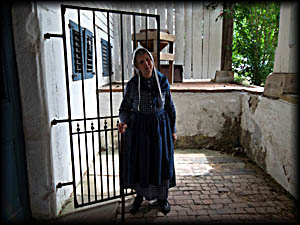
All photos by Cecelia Strecker